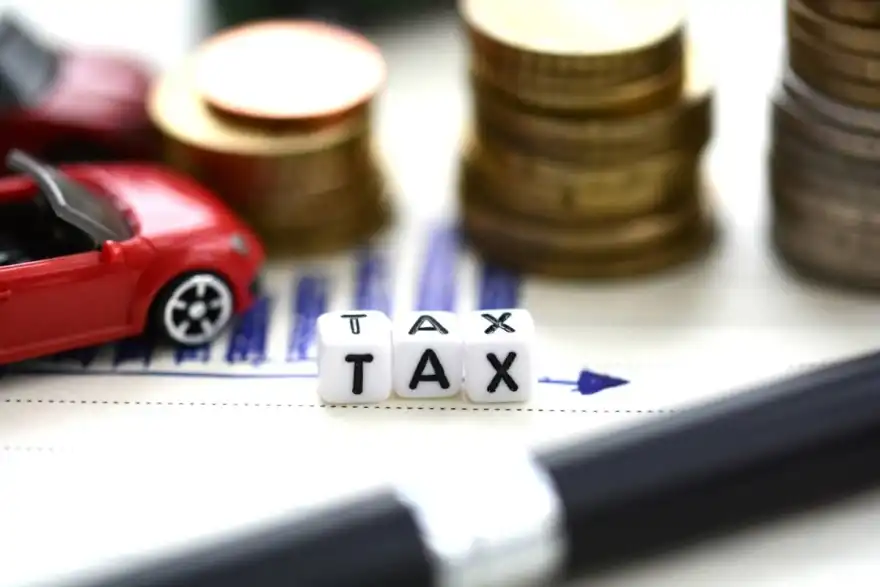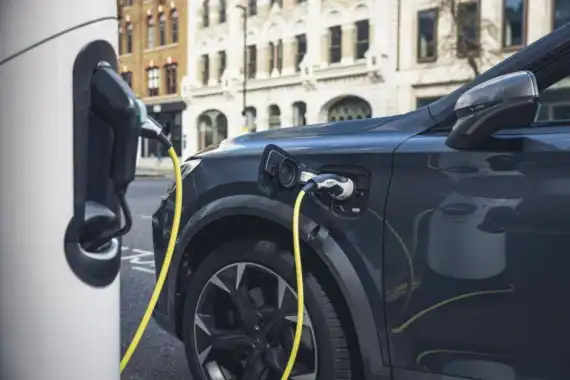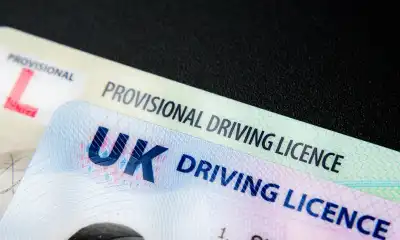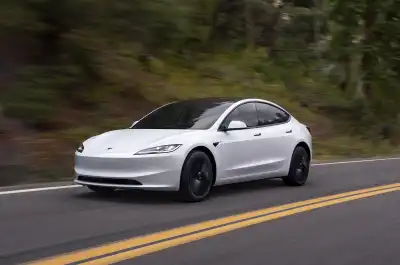
How does company car tax work?
A company car was once a symbolic status for all of those who were ‘doing well’ in the professional world. Although that symbol may have shifted slightly with the times, the company car is still widely viewed as one of the best perks of the job, if you’re lucky enough to get one, but there are tax implications you must consider as it’s not the complete freebie you might have thought it was.
We’ll cover everything in this article from how company car tax works, what tax bands different models are in and how to work out your own company car tax.
The company car
Fleet car sales still make up over 50% of the new car market making it the primary driver for new vehicles in the UK. This is despite the popularity of the company car dropping substantially in recent years, with HMRC reporting 30,000 fewer registrations in 2018/19 than the year previous – and that’s even before Covid-19 caused havoc with the global population.
For the avoidance of doubt, and importantly in the eyes of the tax man, a company car is any fleet vehicle that is used by the owner for private use, which includes commuting, even if it’s one private trip per year. Company cars are viewed by HMRC as a Benefit-in-Kind (BIK), meaning they’re taxable.
The rates of tax that you will pay are determined by which tax bracket your salary puts you in and the car's value, plus its carbon dioxide emissions.
As an employee, your tax is calculated using the following formula: (P11D value) x (BiK band) x (tax bracket).Your P11D value is the sum of its list price, cost of delivery, VAT and any optional extras (but doesn’t include road tax or first-year registration fees).This is multiplied by a Benefit-in-Kind (BiK) band percentage, which is determined by its CO2 emissions.The final figure you will pay is worked out by multiplying the above by your income tax band. For example, if the P11D value of your car is £25,000, it’s a zero emission vehicle (1% tax) and you’re in the 20% tax bracket in England and Wales (Bracket 2), you will pay £50.£25,000 X 0.001 X 2 = £50
Like most tax systems, Benefit-in-Kind rates are subject to change when the chancellor annually reviews the rates. This will likely mean these tax bands and rates increase overtime and will once again be reviewed ahead of the new financial year.

Company car tax in 2021 – 2022
New taxation bands came in for 2021/22 and there’s plenty to get your head around. We have simplified everything for you here.
The tax rates continue to be derived from the WLTP (World harmonised Light vehicle Test Procedure) emission tests. These tests put newer cars through tougher criteria than the old NEDC tests and are intended to be more representative of a car's real-world performance. The test includes a Real Driving Emissions test (RDE2) which takes place on the road and complements the lab based WLTP tests.
The taxation bands based on emissions are here;
Cars Registered before 6 April 2020:
| CO2 (g/km) | Electic Range (miles) | 2020-21 (%) | 2021-22 (%) | 2022-23 (%) | 2023-24 (%) | 2024-25 (%) |
|---|---|---|---|---|---|---|
| 0 | N/A | 0 | 1 | 2 | 2 | 2 |
| 1-50 | <130 | 2 | 2 | 2 | 2 | 2 |
| 1-50 | 70-129 | 5 | 5 | 5 | 5 | 5 |
| 1-50 | 40-69 | 8 | 8 | 8 | 8 | 8 |
| 1-50 | 30-39 | 12 | 12 | 12 | 12 | 12 |
| 1-50 | <30 | 14 | 14 | 14 | 14 | 14 |
| 51-54 | 15 | 15 | 15 | 14 | 14 | |
| 55-59 | 16 | 16 | 16 | 16 | 16 | |
| 60-64 | 17 | 17 | 17 | 17 | 17 | |
| 65-69 | 18 | 18 | 18 | 18 | 18 | |
| 70-74 | 19 | 19 | 19 | 19 | 19 | |
| 75-74 | 20 | 20 | 20 | 20 | 20 | |
| 80-84 | 21 | 21 | 21 | 21 | 21 | |
| 84-89 | 22 | 22 | 22 | 22 | 22 | |
| 90-94 | 23 | 23 | 23 | 23 | 23 | |
| 95-99 | 24 | 24 | 24 | 24 | 24 | |
| 100-104 | 25 | 25 | 25 | 25 | 25 | |
| 105-109 | 26 | 26 | 26 | 26 | 26 | |
| 110-114 | 27 | 27 | 27 | 27 | 27 | |
| 115-119 | 28 | 28 | 28 | 28 | 28 | |
| 120-124 | 29 | 29 | 29 | 29 | 29 | |
| 125-129 | 30 | 30 | 30 | 30 | 30 | |
| 130-134 | 31 | 31 | 31 | 31 | 31 | |
| 135-139 | 32 | 32 | 32 | 32 | 32 | |
| 140-144 | 33 | 33 | 33 | 33 | 33 | |
| 145-149 | 34 | 34 | 34 | 34 | 34 | |
| 150-154 | 35 | 35 | 35 | 35 | 35 | |
| 155-159 | 36 | 36 | 36 | 36 | 36 | |
| 160+ | 37 | 37 | 37 | 37 | 37 |
Cars registered from 6 April 2020:
| CO2 (g/km) | Electric range (miles) | 2020-21 (%) | 2021-22 (%) | 2022-23 (%) | 2023-24 (%) | 2024/25 (%) |
|---|---|---|---|---|---|---|
| 0 | N/A | 0 | 1 | 2 | 2 | 2 |
| 1-50 | <130 | 0 | 1 | 2 | 2 | 2 |
| 1-50 | 70-129 | 3 | 4 | 5 | 5 | 5 |
| 1-50 | 40-69 | 6 | 7 | 8 | 8 | 8 |
| 1-50 | 30-39 | 10 | 11 | 12 | 12 | 12 |
| 1-50 | <30 | 12 | 13 | 14 | 14 | 13 |
| 51-54 | 13 | 14 | 15 | 15 | 15 | |
| 55-59 | 14 | 15 | 16 | 16 | 16 | |
| 60-64 | 15 | 16 | 17 | 17 | 17 | |
| 65-69 | 16 | 17 | 18 | 18 | 18 | |
| 70-74 | 17 | 18 | 19 | 19 | 19 | |
| 75-79 | 18 | 19 | 20 | 20 | 20 | |
| 80-84 | 19 | 20 | 21 | 21 | 21 | |
| 85-89 | 20 | 21 | 22 | 22 | 22 | |
| 90-94 | 21 | 22 | 23 | 23 | 23 | |
| 95-99 | 22 | 23 | 24 | 24 | 24 | |
| 100-104 | 23 | 24 | 25 | 25 | 25 | |
| 105-109 | 24 | 25 | 26 | 26 | 26 | |
| 110-114 | 25 | 26 | 27 | 27 | 27 | |
| 115-119 | 26 | 27 | 28 | 27 | 27 | |
| 120-124 | 27 | 28 | 29 | 29 | 29 | |
| 125-129 | 28 | 29 | 30 | 30 | 30 | |
| 130-134 | 29 | 30 | 31 | 31 | 31 | |
| 135-139 | 30 | 31 | 32 | 32 | 32 | |
| 140-144 | 31 | 32 | 33 | 33 | 33 | |
| 145-149 | 32 | 33 | 34 | 34 | 34 | |
| 150-154 | 33 | 34 | 35 | 35 | 35 | |
| 155-159 | 34 | 35 | 26 | 36 | 36 | |
| 160-164 | 35 | 36 | 37 | 37 | 37 | |
| 165-169 | 36 | 37 | 37 | 37 | 37 | |
| 170+ | 37 | 37 | 37 | 37 | 37 |
Do electric cars get taxed?
Fully electric company cars are in the lowest emissions bracket and therefore are exempt from Vehicle Excise Duty (car tax) but you will still have to pay Benefit-in-Kind (BiK) tax as the employee.

The BiK rate for zero emission company cars increased from 0% to 1% in April 2021 so car tax bills will still be minimal.
To work out how much car tax you will pay, used the following formula: (P11D value) x (BiK band) x (tax bracket).
Do petrol and diesel cars get taxed? Yes. All petrol and diesel cars get taxed. Newer models in particular can qualify for lower tax bands given they have cleaner engines as technology has developed.
Diesel cars not meeting the RDE2 element of WLTP tests will continue to be subject to a four per cent higher BiK rate than petrol cars. Most newer diesels are RDE2-compliant cars, now, though.
Should I get a hybrid? Plug in hybrids (PHEVs) have a lower tax band than regular hybrids and are in substantially lower bands than vehicles that are powered solely by petrol or diesel.The amount of tax a company will pay depends on the P11D value of the car (see above) and its CO2 emissions. Ultimately, a low value car with zero emissions will pay minimal tax.If a hybrid emits 1-50g/km then it will be in the second lowest emissions bracket. In today’s market it’s only PHEVs that achieve this low emissions standard and not regular hybrids. Theoretically, PHEVs could qualify for the lowest (0g emissions) bracket, but in order to do so, they must have an electric range of >130 miles. There is no PHEV on the market which is close to achieving this in 2021.
Guide to company car tax terms
- BiK (Benefit-in-Kind): this is the tax placed by the government on a non-financial perk, such as a company car.
- CO2 (carbon dioxide): this is gas produced by internal combustion engine cars. CO2 output is measured in grams per kilometre (g/km) and used to set tax.
- ICE (internal combustion engine): traditional engines that run on petrol or diesel
- BiK rate: the percentage of a company car’s value that is taxable
- WLTP (Worldwide harmonised Light vehicle Test Procedure): the new economy and emissions test procedure; all new cars registered from September 2019 are assessed under WLTP.
- RDE2 (Real Driving Emissions, Step 2): RDE emission tests take place on the road. This accompanies the lab-based WLTP assessments
- Diesel surcharge: diesel company cars not complying with the RDE2 element of WLTP tests are automatically hit with a four per cent BiK increase compared with their petrol-engined equivalents.



